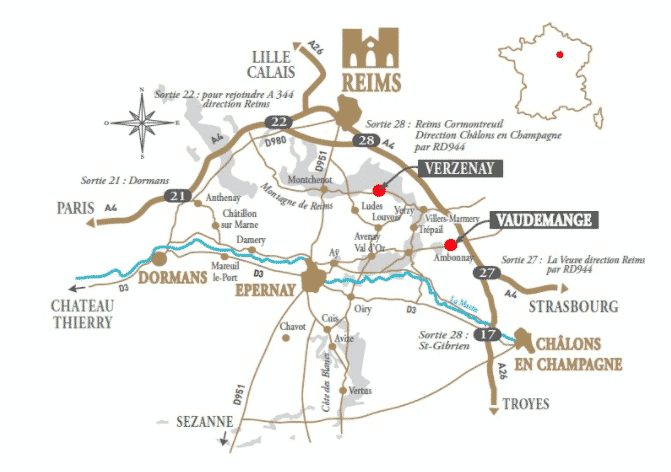Our Terroir
A n e x c e p t i o n a l e s t a t e i n a l a n d o f h i s t o r y
An exceptional estate in a land of history
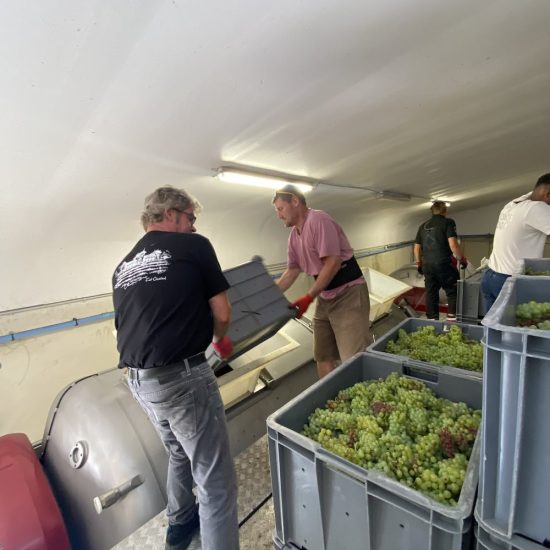
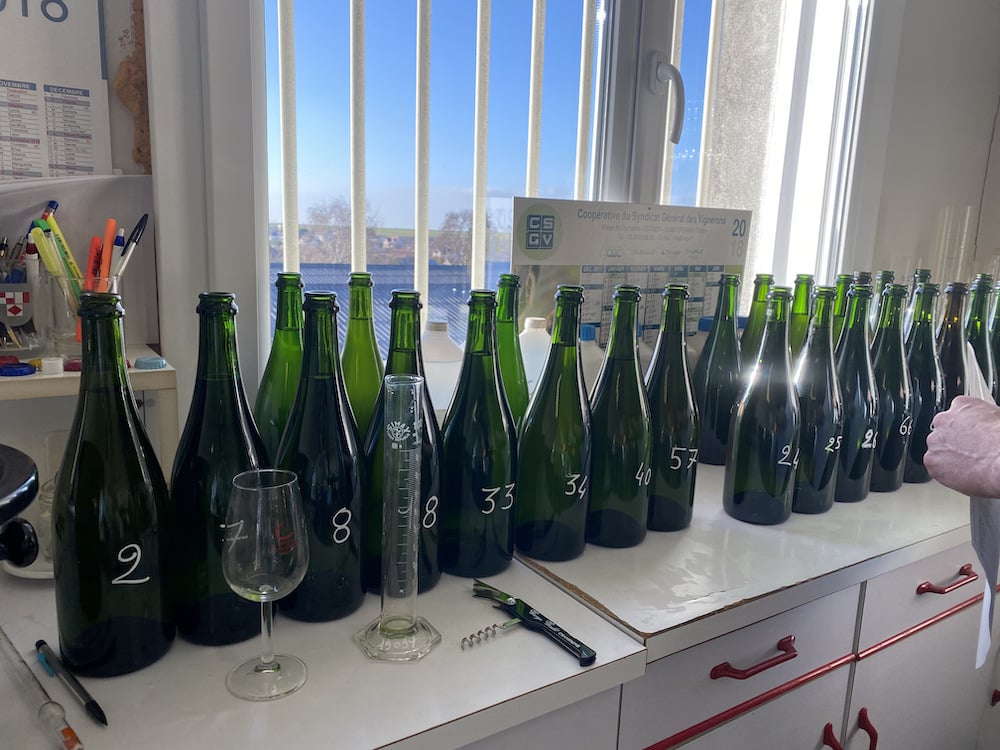
One of the specificities of the Montagne de Reims region is its climate. The latter is at the crossroads of several environments:
- Northern, a cold climate which is severe for the vine.
- Oceanic, bringing water to the vines in regular quantities with little marked thermal contrasts from one season to another.
- Continental, responsible for frosts which can be destructive in winter but which provides favorable sunshine for grapes in summer.
It is this plurality of culture and climate that allows the Chaudron estate to offer such unique and rich Champagnes.

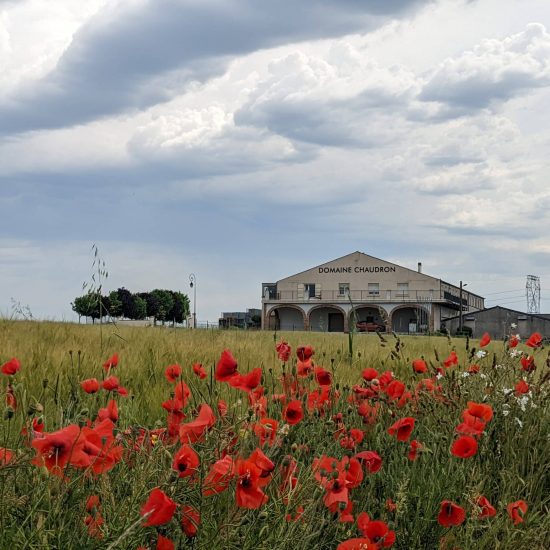
The Chaudron estate is located on the Montagne de Reims, ancestral land of the Grands Crus, with limestone and clay soil, ideal for the vines and which gives Champagne its unique characteristic and its coveted appellation. The Montagne de Reims is the kingdom of Pinot Noir, which gives Champagne its strength and character. Its valleys and its vegetation also offer protection and stand like a fortified castle to protect the Chardonnay plants which offer more balanced and ample wines. It is this plurality of culture that allows the Chaudron estate to offer such unique and rich Champagnes.
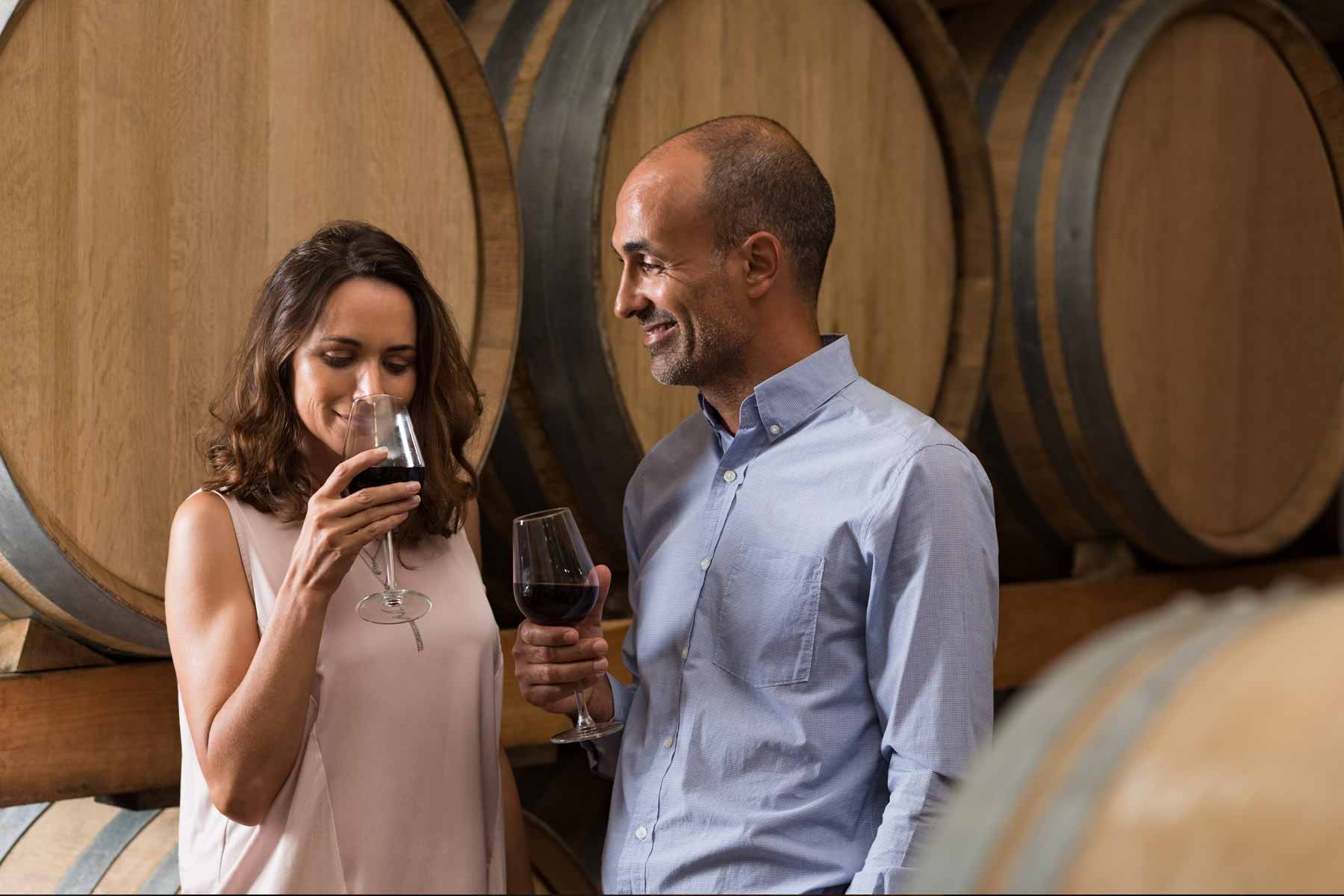
$60 per Guest/ $15 for Club Members
In this tour, guided by our wine technologist Fillipe, you will be walked through the process of fermentation, aging and mixing of different sorts of wines. You’ll have the chance to be part of the wine-making process.
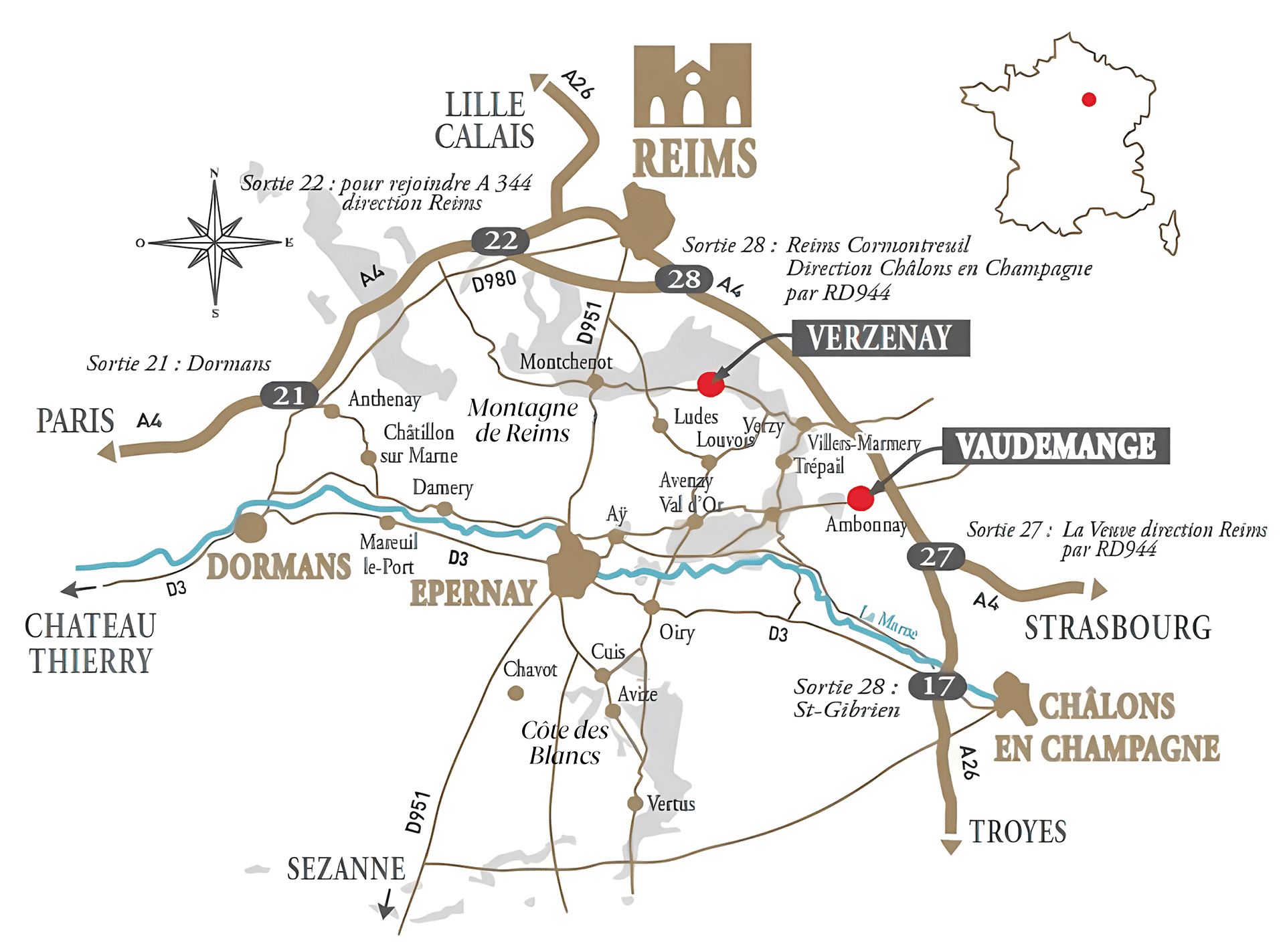
The Montagne de Reims sees the appearance of these first vineyards between the 1st and 4th centuries.
We then list in the 15th century 400 wine-growing communes. In 1887, on the strength of the success of Champagne, the Syndicat des Grandes Marques de Champagne mobilized and campaigned to obtain recognition of the ownership of the word Champagne, exclusively for wines from the region.
The first delimitation of the Appellation zone took place in 1908 and covered 15,000 hectares. It was in 1927 that the final delimitation took place, according to the wine-growing history of the communes, localities and plots. The area of the zone increases to 34,000 hectares.
Champagne wines owe their inimitable typicity to a totally original terroir.
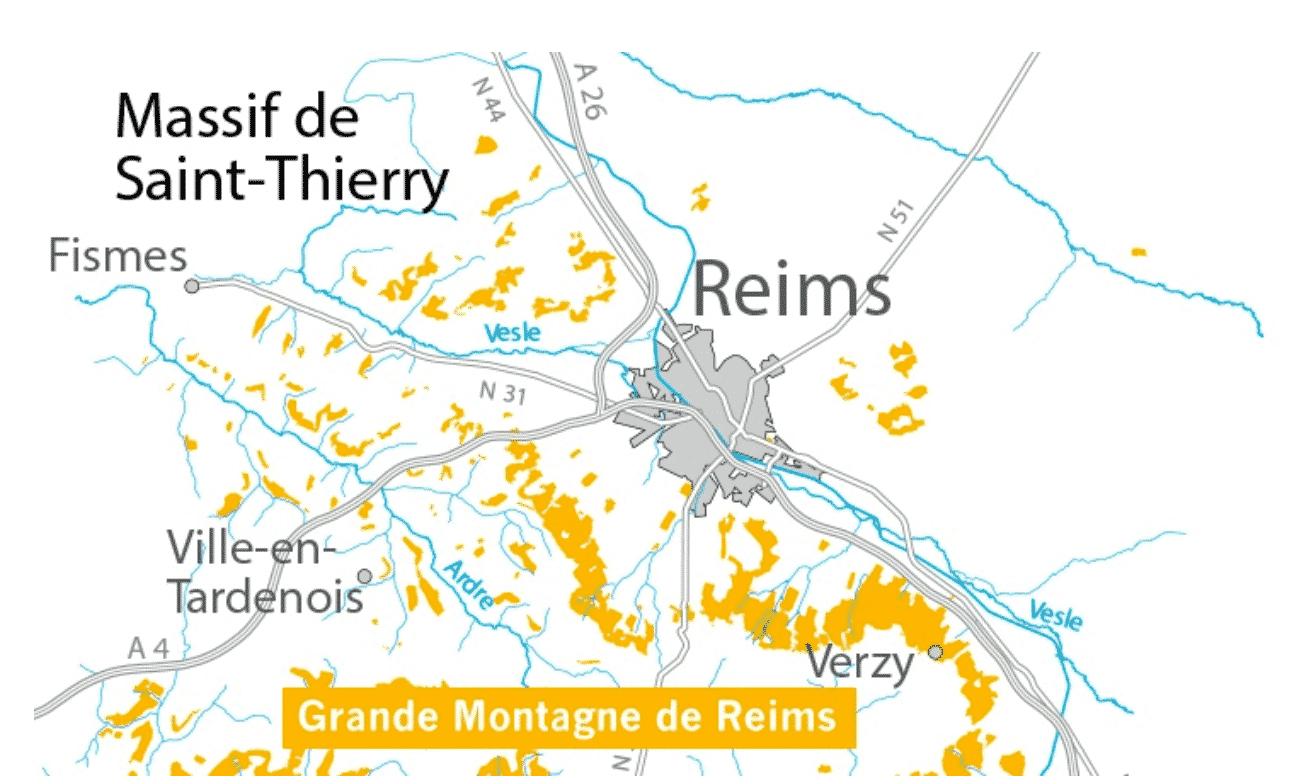
The Champagne region has a mostly limestone subsoil which provides the vines with constant natural irrigation. Combined with a hillside planting, this promotes good sun exposure for the vines and the runoff of excess water.
What makes the terroir truly unique is the extreme fragmentation of the vineyard. No less than 260,000 plots which are as many gardens that the winegrowers cultivate, taking care of the particularity of each to express all its specificity. Each parcel has been identified and named for a long time: “les Côtes à Bras, les Gouttes d’Or,…”.
The Reims Moutain, the throne of Champagne
Les vignobles de la Montagne de Reims sont classés Grands Crus à 100%. C’est ce qui permet à nos champagnes d’être des produits de qualité reconnus à travers le monde et notre région.
L e s v i g n o b l e s d e l a M o n t a g n e d e R e i m s s o n t c l a s s é s G r a n d s C r u s à 1 0 0 % . C ’ e s t c e q u i p e r m e t à n o s c h a m p a g n e s d ’ ê t r e d e s p r o d u i t s d e q u a l i t é r e c o n n u s à t r a v e r s l e m o n d e e t n o t r e r é g i o n .
The grape varieties
T h e g r a p e v a r i e t i e s
Since 1935, only three grape varieties have been authorized in Champagne: pinot noir, pinot meunier and chardonnay.
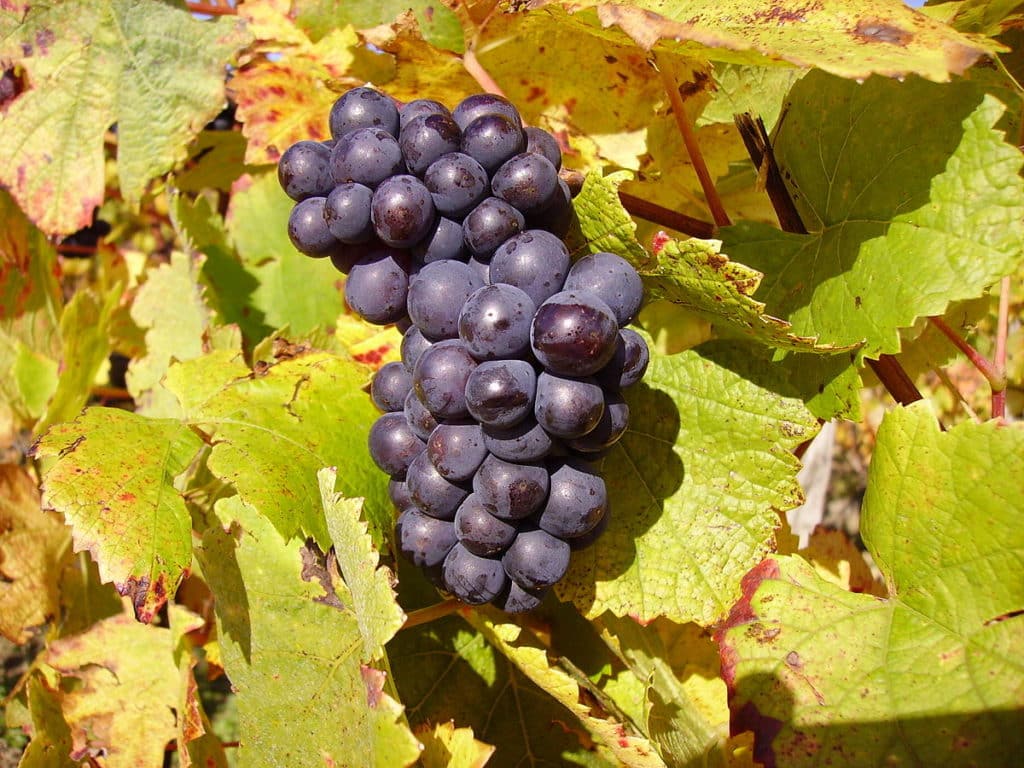
Pinot Noir.
It gives the wine aromas of red fruits; it is the grape variety that brings body and power to the blend.
Pinot Meunier.
This variety is supple and fruity. Its bouquet is intense; it evolves more quickly over time and gives the wine roundness.
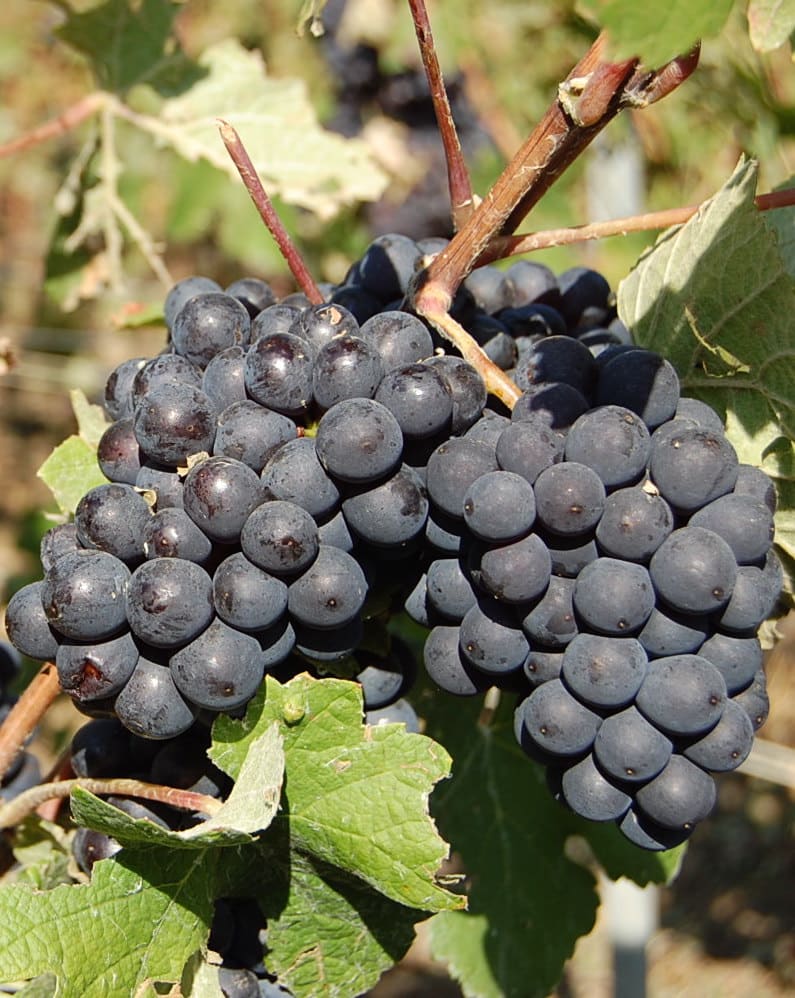
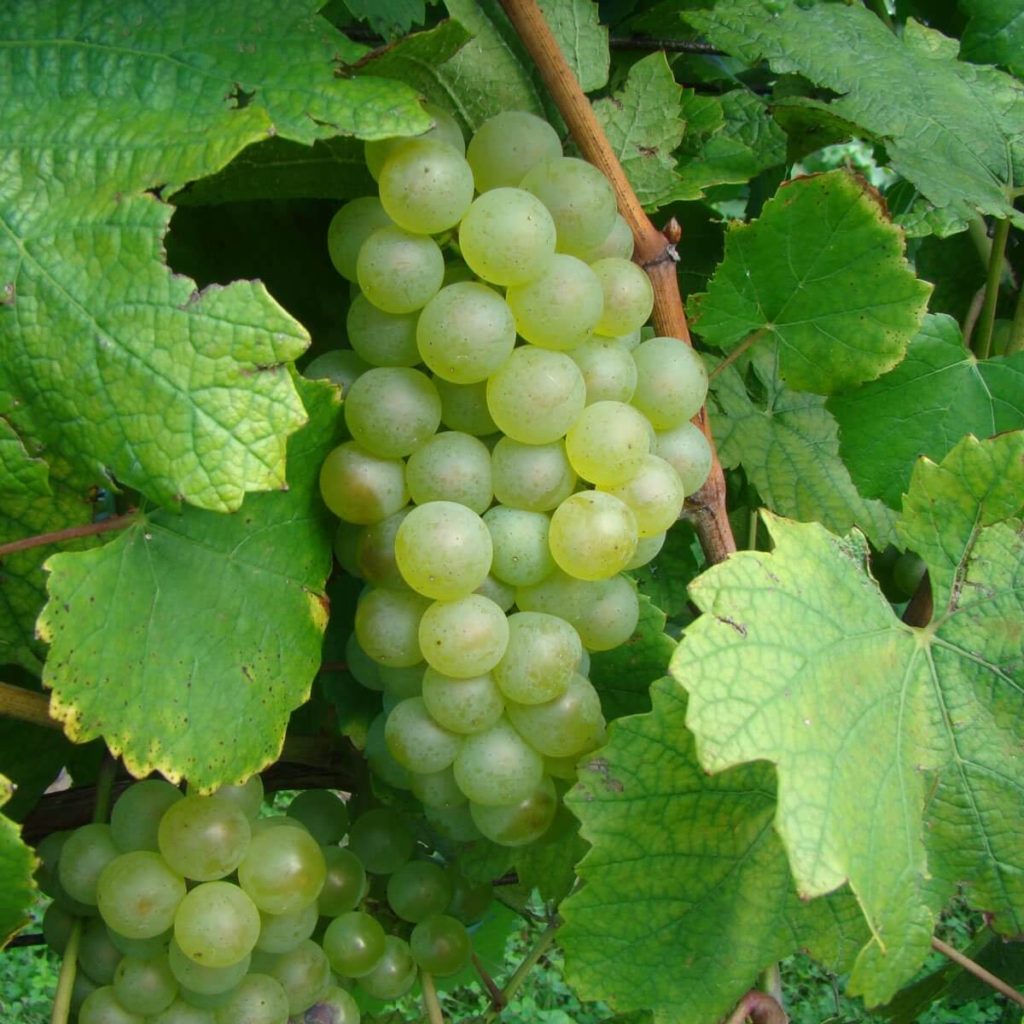
Chardonnay.
The grape of finesse. It gives floral notes, it is young and its slow evolution makes it an ideal complement for the maturation of wines.
A unique name specific to this terroir
In Champagne, we have an appellation recognized throughout the world, the Appellation d’Origine Protégée (AOP). It indicates the geographical origin of the product and subjects it to rules of production and development. The products recognized in AOP are a fusion between the terroir (geographical, climatic…) of the product and all the means implemented for its elaboration, thanks to the know-how of the men. Our champagne AOP is very technical in order to perpetuate a know-how unique to our appellation. Our hillside vineyard is a very good asset for producing quality grapes because it allows us to have perfect sunshine to guarantee the maturation of our grapes and thus offer you champagnes of subtle and fruity qualities.
The advantages of the AOP (INAO Congress)
« An AOP thus results from the fusion between the natural environment and human talent. It is from this merger that an AOP product will be born, with a unique, irreplaceable character, a product that will never position itself on the market in competition but in complementarity, because of its difference. An AOP product therefore has a strong identity and a typical character which gives it added value».
The main rules of the AOP Champagne are:
A strictly demarcated area.
Authorized grape varieties: chardonnay, pinot noir, meunier, pinot blanc, pinot gris, arbane, petit meslier
Pruning of the vines: Royat, Chablis, Guyot, Vallée de la Marne.
Limitation of grape yield per hectare.
Yield at pressing.
Minimum degree of alcohol in power, at harvest.
Second fermentation in bottles and maturation on the lees for a minimum of 15 months for non-vintages, 3 years for vintages.
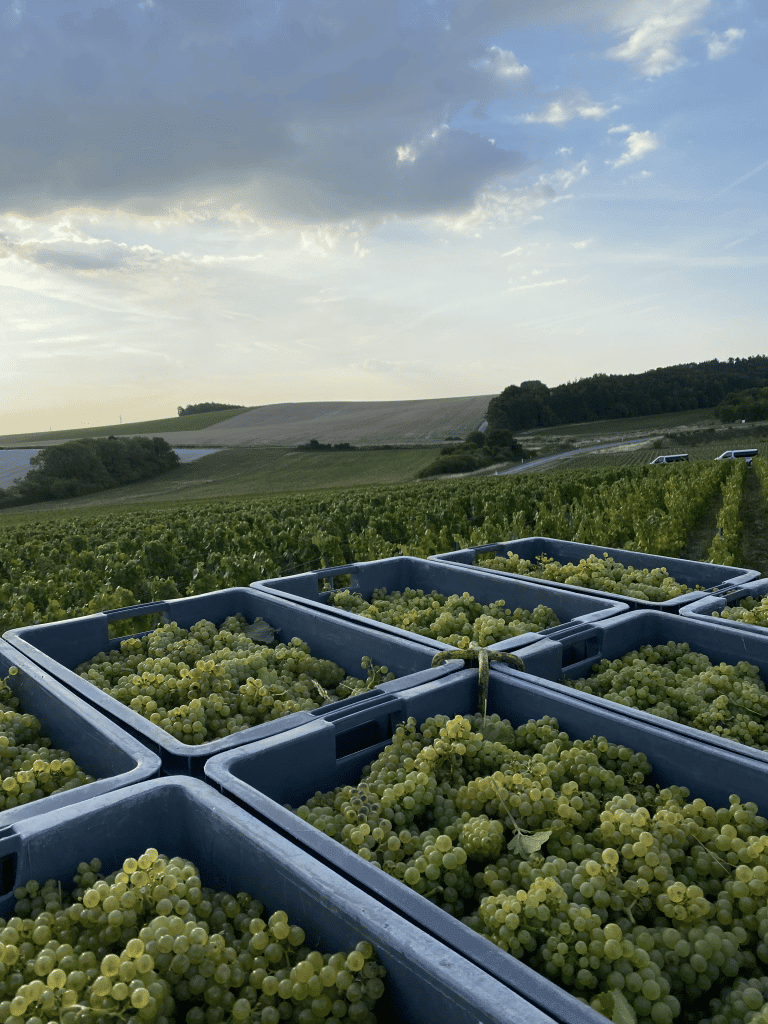
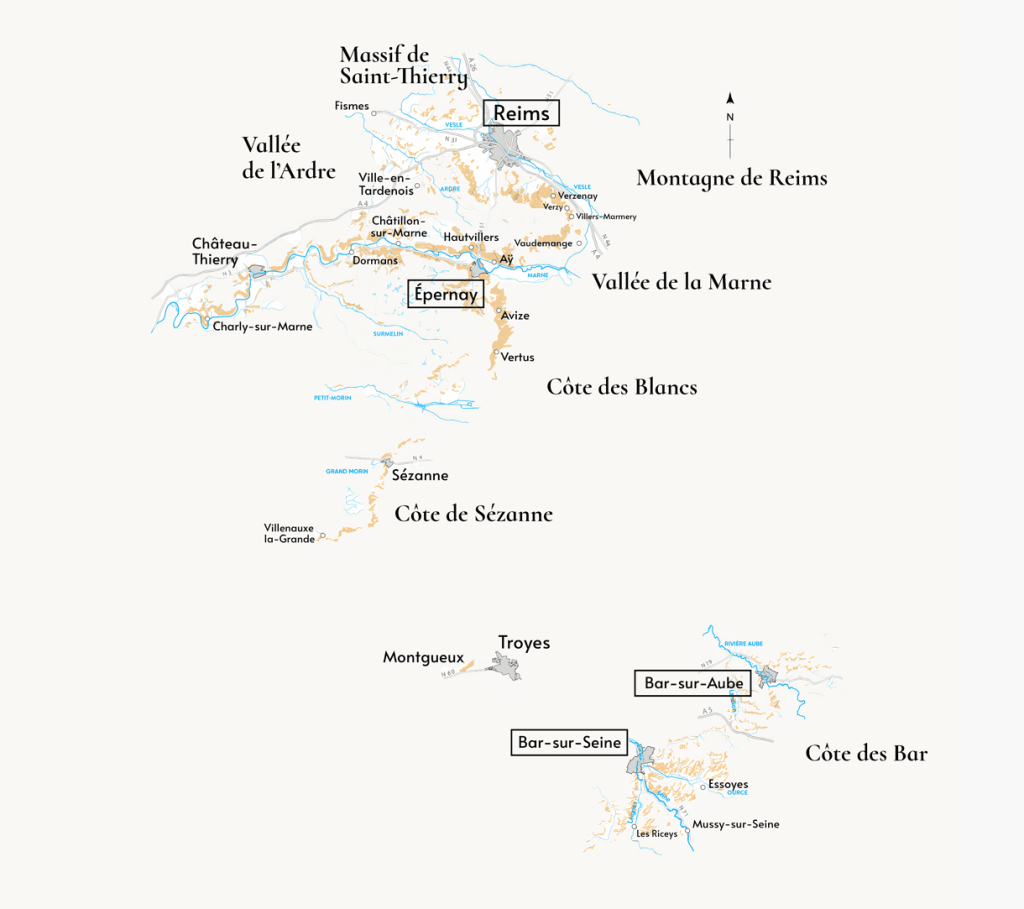
It is thanks to all these regions and our status as a handling merchant that we can bring wines from other regions of Champagne to create quality champagnes, such as 100% meunier from the Saint Thierry massif.
The Vallée de la Marne extends over a hundred kilometers from Saâcy-sur-Marne in the department of Seine-et-Marne to Tours-sur-Marne beyond Épernay. The vines are spread over the hillsides which descend in more or less gentle slopes to the edge of the river, as well as in the picturesque valleys bordering the valley on either side. This is where Pinot Noir reigns supreme.
The Côte des Blancs, so called because it produces almost exclusively white grapes, is a cliff perpendicular to the Montagne de Reims and located south of Épernay. In the south of the department of Marne, the vine is visible in a discontinuous way to the north and south of Sézanne. In the Vitry-le-François region, planted areas remain limited to a few municipalities.
The Côte des Bar, to the south, extends the wine sector. Apart from Villenauxe-la-Grande, the southern part of the Marne vineyard, and Montgueux, in the immediate vicinity of Troyes, which only have a few dozen hectares, the vines are grouped around Bar-sur-Seine and Bar -sur-Aube. To the east of the latter, the department of Haute-Marne can claim the existence of a few dozen hectares of vines.
The Montagne de Reims vineyards are 100% Grands Crus classified. This is what allows our champagnes to be quality products recognized throughout the world and our region.

Y o u r V i s i t
Please note that in order to attend an event you must be of legal age. The only case, in which a person under age can attend an event is when they accompany their parent or legal caretaker. Thank you for your understanding.
Location
Our nearest train stations are Pulborough and Billingshurst – we’d recommend booking a local taxi in advance from the station.
Mobility
In case a member of the party has restricted walking ability, email experiences@wineryorganic.com to let us know and we will make sure you are as comfortable as possible.
Parking
Parking is free at Winery organic. You can safely park your vehicle and then have a short walk, following the signs to the White Barn. This is where you will begin the tour.
Previous
Next
